SpaceX’s Starlink Missions Are Quite Uplifting — Triple Play
Sixty Starlinks Successful Sendoff
SpaceX was successful with the launch on Wednesday, May 26, with the firm’s Falcon 9 launching 60 Starlink satellites from Space Launch Complex 40 (SLC-40) at Cape Canaveral Space Force Station in Florida.
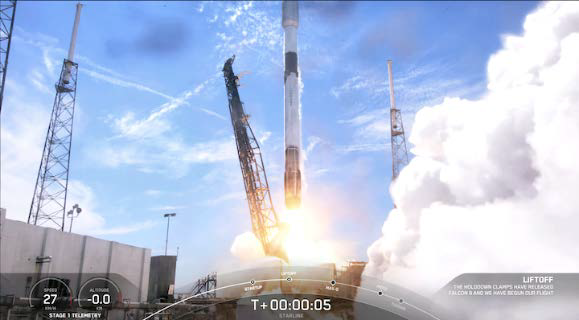
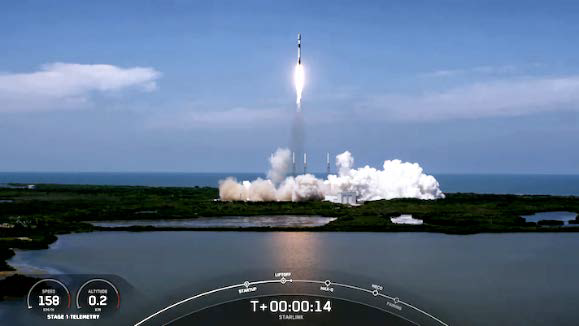
Falcon 9’s first stage booster previously supported the Sentinel-6A mission. Following stage separation, SpaceX successfully landed Falcon 9’s first stage on the “Just Read the Instructions” droneship, located in the Atlantic Ocean.
One half of Falcon 9’s fairing previously supported four Starlink missions and the other half previously supported a Starlink mission and the Transporter-1 mission.
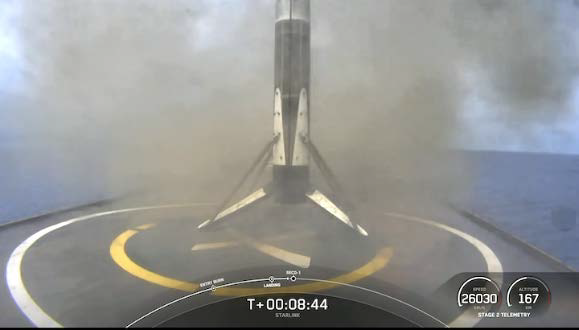
Then, on Saturday, May 15, another of the company’s follow-up Starlink missions occurred, with the smallsats nestled aboard a Falcon 9 launch vehicle that lifted off from Launch Complex 39A (LC-39A) at Kennedy Space Center in Florida.
On board this mission were 52 Starlink satellites, a Capella Synthetic Aperture Radar (SAR) satellite, and Tyvak-0130, an optical spectrum astronomy observation satellite.
The Falcon 9 first stage booster that supports this mission previously launched NASA astronauts Bob Behnken and Doug Hurley to the International Space Station, ANASIS-II, CRS-21, Transporter-1, and three Starlink missions.
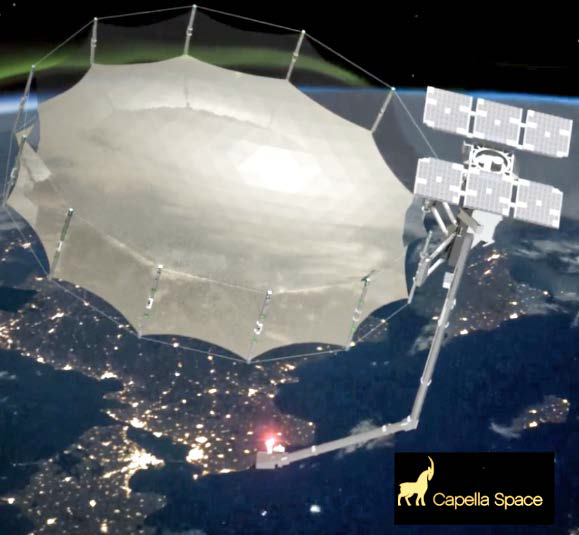
Following stage separation, SpaceX landed the Falcon 9’s first stage on the “Of Course I Still Love You” droneship located in the Atlantic Ocean. One half of this mission’s Falcon 9’s fairing previously supported the SXM-7 mission, and the other half previously supported the NROL-108 mission.
For continual on-orbit updates of the Starlink constellation, please visit satellitemap.space.
And, lest we forget, SpaceX also launched 60 Starlink smallsats on May 9. After stage separation, the Falcon 9’s first stage returned to Earth and landed on the “Just Read the Instructions” droneship.
This was the first Falcon 9 first stage booster to complete a tenth launch and landing. The first stage booster previously supported Crew Dragon’s first demonstration mission to the International Space Station, the RADARSAT Constellation Mission, SXM-7, and this seventh Starlink mission.
OneWeb’s Constellation

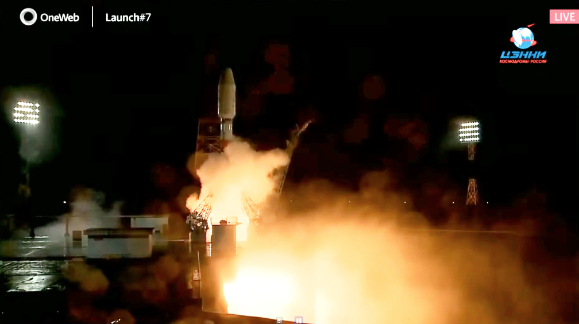
Smallsats Successfully Launched By Arianespace Via A Soyuz Rocket @ Vostochny Cosmodrome
On Friday, May 28, 2021, OneWeb launched 36 satellites to bring the company one step closer to completing their commercial service by the end of the year.
This was OneWeb’s seventh overall launch and the fourth in a five-launch program to fulfill the company’s ‘Five to 50’ service.
The satellites are manufactured by OneWeb Satellites, a joint venture between OneWeb and Airbus Defence and Space, based in Space Coast, Florida. The venture developed a production line process for manufacturing the satellites that dramatically lowers costs and also significantly accelerates output.
With two production lines in their Florida factory, each line can build one satellite in a single eight-hour shift, allowing OneWeb Satellites to produce satellites at a scale that will enable the company to rapidly build out its full constellation.
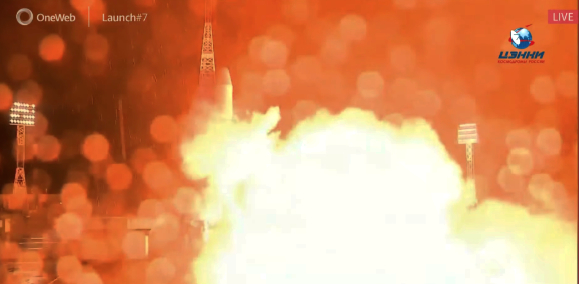
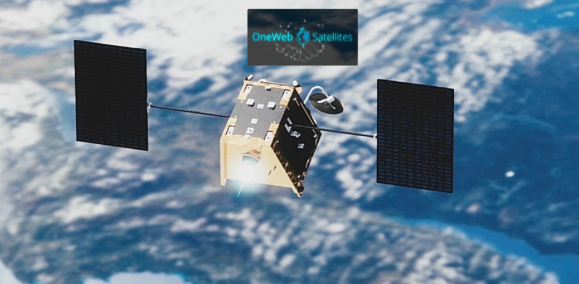
OneWeb Satellites employs more than 180 people in Florida and is on track to have a headcount of 200 at the Merritt Island facility on the Space Coast by the end of the year. OneWeb has now increased their satellite constellation to more than 200 spacecraft.
This latest launch adds 36 satellites to OneWeb’s constellation as the company works to complete their 648 LEO satellite fleet that will deliver high-speed, low-latency global connectivity.
This launch placed the smallsats in their designated orbits and represents 80 percent of the constellation required to enable the firm’s connectivity solution to reach all regions north of 50 degrees latitude by June of 2021.
OneWeb plans to offer connectivity across the United Kingdom, Alaska, Northern Europe, Greenland, Iceland, the Arctic Seas and Canada.
Their service is expected to be switched on before the end of the year and OneWeb intends to make global service available in 2022.
The launch occurred from the Vostochny Cosmodrome and was be conducted by Arianespace. This was the 57th Soyuz mission conducted by Arianespace and their Starsem affiliate.
By operating this flight on behalf of OneWeb, Arianespace continues their record of fulfilling their customer’s ultimate ambition, that being to provide internet access for everyone, everywhere, all the time.
NanoAvionics Reveals Their Growth and Biz Development Plans
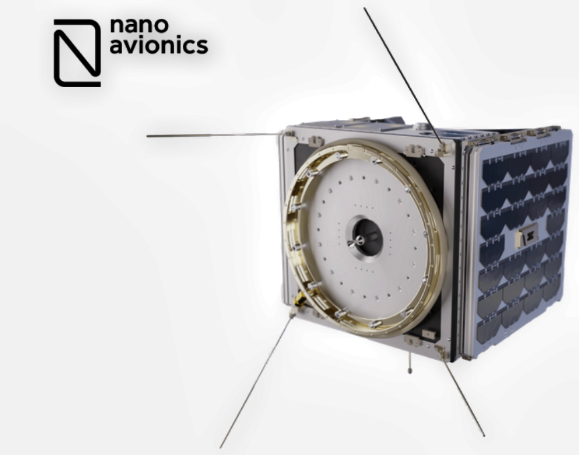
NanoAvionics has laid out its ambitious growth and business development plans for the USA via its existing facility in Columbia, Illinois.
The smallsat bus manufacturer and mission integrator will develop the only satellite manufacturing facility in the state to become its main hub in the US. Through this hub, NanoAvionics will further grow the portfolio and expand into other locations across the USA.
The company is also using it to coordinate all business development activities in the LATAM region, exemplified by the existing “D-2/ AtlaCom-1” rideshare mission with Mexican consortium partners Space JLTZ and the Municipality of Atlacomulco among others.
NanoAvionics US revealed additional plans to open a full scale manufacturing, assembly, integration and test (MAIT) facility for serial manufacturing of smallsats and establish a mission operations center.
To enable and foster this growth, NanoAvionics intends to hire around 100 people by the end of 2022, about half of those for the Columbia hub.
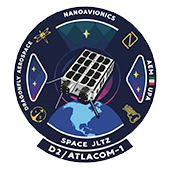
The company has already tested the first satellites at the facilities for its US customers missions.
F. Brent Abbott, the CEO of NanoAvionics US, in charge of the Columbia hub, said, “The USA is the largest NewSpace hub in the world and NanoAvionics US has an ambitious goal to take 30 percent of the US market share in nano-/microsatellite manufacturing and mission provision services.
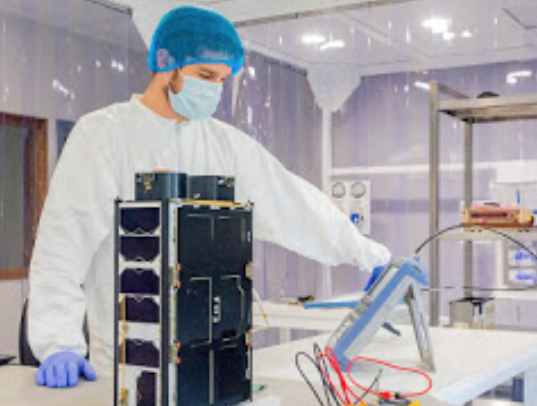
Smallsat testing @ Nanoavionics.
“This is a direct response to the demand we are seeing, with our US revenues having already surpassed last year’s figures. We are already in on- going negotiations about satellite constellations with four NewSpace companies in the USA.”
The Columbia facility will be used to produce numerous nano- and microsatellite buses, for both single and constellation missions. By using a mass production approach, similar to the principle of the automotive industry, NanoAvionics is capable to manufacture hundreds of identical small satellites within a relatively short time frame of 6-10 months — ideal for satellite constellations.
Abbott added, “Columbia’s lower operating and living cost will also keep NanoAvionics’ competitive advantage in a tough small satellite market driven by lowering cost, shorter lead times and greater payload volume.”
Satellite Vu Engages in Infrared Space Tech
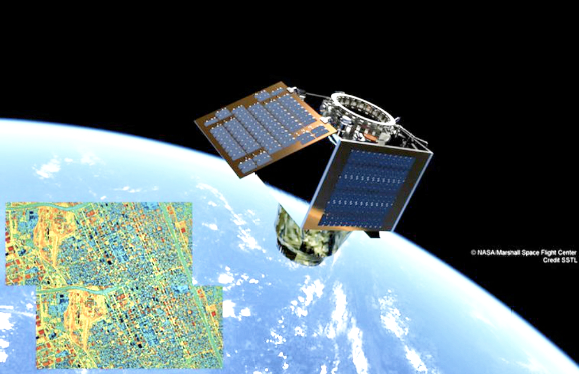
Satellite Vu is preparing to provide a disruptive service to those who tackle critical global issues. Earth Observation (EO) has become a key part of environmental monitoring, and Satellite Vu is poised to transform this market through the construction and launch of unique and ground-breaking satellites that will deliver infrared imaging with frequent re-visit times, both day and night.
Rishi Sunak, the Chancellor, announced £3 billion of energy efficiency measures toward a new green homes grant and for insulating public buildings. The measures are aimed at helping the UK meet its 2050 target for net zero carbon emissions.
Satellite Vu has signed a Memorandum of Understanding (MoU) with Surrey Satellite Technology Ltd. (SSTL) to develop the infrared imaging space technologies for the constellation.
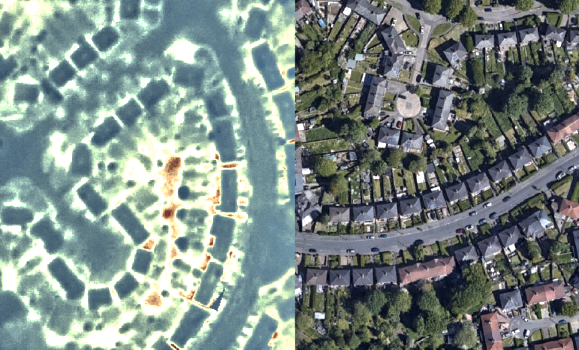
The infrared thermal measurements can be used to identify which buildings are emitting the most heat and that might be candidates for energy efficiency measures.
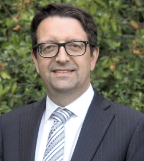
Anthony Baker
“This ground breaking and timely technology will for the first time allow government and the public to make better and informed decisions on which buildings are a priority to upgrade.” said Anthony Baker, CEO of Satellite Vu. “Satellite Vu is open to collaborating with end users to develop specific trials to demonstrate the power and capability of this new data in advance of a future satellite launch.”
Phil Brownnett, Managing Director of SSTL, said, “SSTL is innovating at the forefront of space technologies in the UK and we are very pleased to be working with Satellite Vu on this exciting new mission.” The data from Phil Brownnet
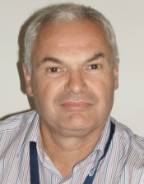
Phil Brownnet
the thermal imaging systems will have multiple uses both commercially and for good causes, especially environmental. We have all felt Urban Heat Islands (UHIs) when the city temperature is higher than the rural areas.”
Phil continued, “The UHIs can be limited to a city block or extend over larger districts, and high resolution infrared satellite imaging has the capability to detect the location of heat islands in every city on a national scale at better than postcode resolution. The presence of heat islands exacerbates the heat stress suffered by the most venerable especially during lockdown when confined to one location.“
Dragonfly Aerospace Acquired
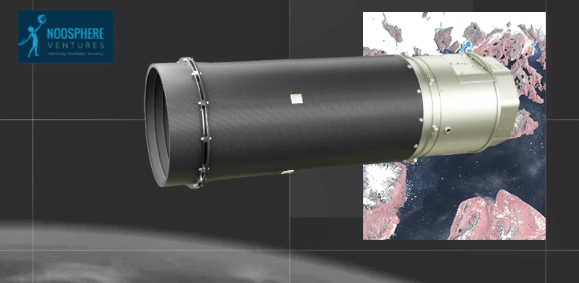
Dr. Max Polyakov – the international technology entrepreneur, investor and economist who is revolutionizing the space industry – has completed his acquisition of a majority stake in Dragonfly Aerospace, a South African NewSpace company with more than 20 years of proven heritage in high-performance imaging satellites and payloads.
This purchase cements Dragonfly Aerospace’s status as a critical component of the vertically integrated space ecosystem being built by Dr. Polyakov and Noosphere Ventures that includes Firefly, the competitively-priced space launch provider, EOS Data Analytics (EOSDA), a satellite data and analytics company with its own radar and optical satellite constellations, and SETS, a space electric thruster systems firm.
“Satellites depend on many components in the space industry value chain. Dragonfly Aerospace’s expertise in creating imaging constellations is an important step in the development of our vertically integrated space ecosystem,” commented Dr. Polyakov. “Dragonfly’s
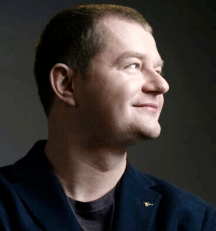
advanced technology provides high quality images in a wide range of spectrums and resolutions that are critical for monitoring the health of our planet and enabling intelligent agriculture that protects biodiversity. This improves global food security and supports a healthy environment which ultimately benefits the lives of people on Earth."
Dragonfly Aerospace was founded in Stellenbosch, South Africa, by a team of five satellite engineers led by Bryan Dean, a global specialist in smallsats and high resolution cameras. Its compact, high performance imaging payloads have catapulted the company into the role of a trusted partner providing imaging technology. Dragonfly Aerospace announced at the International Astronautical Congress 2020 that it had struck a deal with EOSDA, a Noosphere Ventures portfolio company, to provide two of Dragonfly’s large imagers for the company’s satellites.
EOSDA has previously announced their plans to launch the world’s first agriculture-focused satellite constellation, which will also help address global problems such as climate change, land degradation and environmental threats.
“I am incredibly proud today to see the company that I co-founded become an important part of Dr. Polyakov’s space ecosystem,” said Bryan Dean. “When our team started developing our camera technology in 2016 and then first demonstrated it successfully on the nSight-1 satellite in 2017, I knew that satellite imaging products would prove critical in the rapidly developing nanosatellite sphere. We have applied our extensive experience in developing and flying large microsatellite imagers to create innovative products for this exciting market segment. Our strategy is to work in partnership with satellite bus providers and in time deliver microsatellite solutions as well.”

The Stellenbosch-based company emerged in January 2020 from Space Commercial Services (SCS) to lead the next chapter of South Africa’s history of space engineering and satellite missions. Dragonfly began with a core team of 15 people and has since expanded to more than 100 personnel.
Dragonfly Aerospace has grown to supply a global clientele that includes NanoAvionics, Loft Orbital and Pixxel, among others with a special focus on Europe, currently the largest market for imaging technology.
Dragonfly Aerospace also plans to support the South African National Space Agency (SANSA) and the SA space industry to achieve its future space endeavors.
Of additional interest is that Firefly Aerospace, where Dr. Polyakov is the major shareholder, successfully completed their Series A financing. Almost $200 million was raised, and the company’s total value far exceeded the $1 billion it had reached in the pre-investment phase. The company has announced multiple commercial and civil Alpha launch customer contracts, including NASA and General Atomics. The firm is completing preparations for the inaugural launch of their Alpha launch vehicle from Vandenberg Space Force Base (VSFB) Space Launch Complex 2 (SLC-2).


